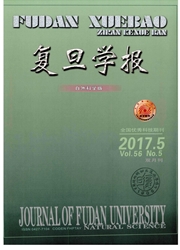

 中文摘要:
中文摘要:
设计并制作了一种在微腔中对蛋白质进行微批量法(microbatch)结晶的碟式微流控结晶芯片,它是一种高通量、低成本、低耗样量(纳升级)、操作简便的蛋白质结晶筛选方法,这种芯片能成功地结晶溶菌酶(lysozyme)和青色荧光蛋白(CyPet).为了系统地比较这种微流控芯片与传统的使用蒸汽扩散法(vapor diffusion)的24孔结晶板的结晶能力,用3个Hampton结晶试剂盒(Crystal Screen KitⅠ、Crystal Screen KitⅡ和PEG/Ion Screen Kit),在4℃及20℃培养条件下分别对5种标准蛋白(溶菌酶(lysozyme)、木聚糖酶(xylanase)、脂肪酶B(lipase B)、葡萄糖异构酶(glucose isomerase)和嗜热菌蛋白酶(thermolysin))进行了结晶筛选实验.结果表明,在4℃时微流控芯片与24孔结晶板有相近数目的结晶条件(91 vs 98);在20℃时虽然微流控芯片上的结晶条件数少于24孔结晶板(67 vs 94),但主要是嗜热菌蛋白酶的结晶条件数显著减少,其他4种蛋白在两种方法上均有相近的结晶条件数,表明微流控芯片能以接近24孔结晶板的效率进行蛋白质结晶筛选.但是,在4℃时微流控芯片与24孔结晶板有60%的结晶条件不同,20℃时有90%的结晶条件不同,这表明目前的这种微流控芯片还不能直接代替传统的24孔结晶板,它可以作为蛋白质结晶筛选时的一种补充方式.
 英文摘要:
英文摘要:
Previously we designed a disk-like microfluidic chip that can crystallize proteins using the method of microbatch in microchambers. It has been proven to crystallize lysozyme and CyPet successfully and reduce the consumption of protein samples to nanoliters. However, no systematical comparison has been made between this new device and traditional methods in protein crystallization. To investigate whether the microfluidic chip is as effective as the conventional 24 well crystallization plate which using hanging-drop vapor diffusion method in protein crystallization screening, here, we performed an extensive comparison between these two methods by screening five standard proteins (lysozyme, xylanase, lipase B, glucose isomerase and thermolysin) in three Hampton crystal screen kits (Crystal Screen Kit I , Crystal Screen Kit Ⅱ and PEG/Ion Screen Kit) at 4 ℃ and 20 ℃. For the total of 146 crystallization conditions, the mierofluidic chips had similar number of crystallization hits at 4 ℃ (91 vs 98 conditions). While at 20 ℃ the microfluidic chips had less number of crystallization hits (67 vs 94 conditions). But four proteins showed similar number of crystallization hits except thermolysin. This result indicates the microfluidic chip works as efficient as conventional crystallization plate. However, about 60% crystallization conditions at 4 ℃ and 90% crystallization conditions at 20 ℃ were different between these two methods, which means the present microfluidic chip cannot directly replace but can be a supplement to the traditional 24 well crystallization plate for protein crystallization screening.
 同期刊论文项目
同期刊论文项目
 同项目期刊论文
同项目期刊论文
 期刊信息
期刊信息
